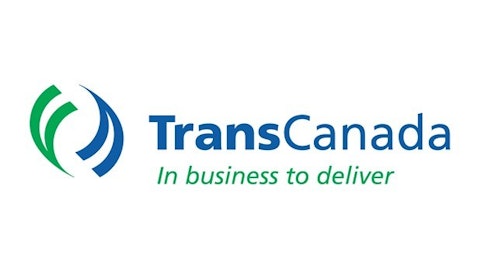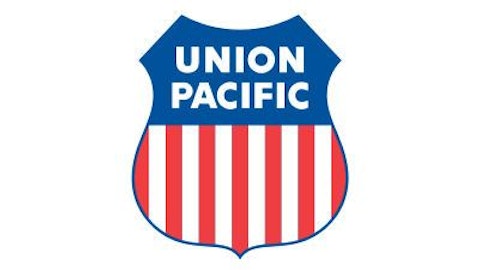As a way to promote goods and services that is beneficial to society as a whole, governments often establish entities that have direct interaction with consumers. One of these such entities is the Crown Corporation, which is officially owned by the Canadian government but enjoys a greater latitude in making its own decisions than a governmental department. In this article, we will take a look at two former Canadian Crown Corporations that are now publicly traded corporations.

Unlike the largest U.S. airlines, Air Canada found its roots as a government-owned operation. While airlines in the U.S. were major beneficiaries of government subsidies in their early history, Air Canada owes its existence to the Canadian government, which formed the airline as Trans-Canada Air Lines in the 1930’s. In the interest of promoting long distance air travel across Canada, TCA was given a monopoly over long range Canadian flights and maintained a dominant position in international air travel for most of its history.
After being renamed Air Canada, the airline was later privatized in the 1980’s and faced competition in the private sector from rival operator Canadian Airlines. However, after a hard-fought takeover battle, Air Canada merged with Canadian and took a dominant position in the Canadian air travel market, both domestically and internationally. But the good times didn’t last. Air Canada was forced to wipe out its shareholders only a few years later and reorganize the airline under CCAA.
Today, Air Canada still has a commanding position in the Canada-originating overseas air travel market, but faces competition from WestJet Airlines in the domestic and the Canada-to-U.S. markets. After recovering strongly from last summer when shares fell below a dollar, Air Canada shares topped $3 each before falling back to a little above $2 per share. WestJet shares also slid from their peak in the mid-$20 range down to about $20 each before rising above $21 on a positive earnings report. Capacity concerns knocked both airlines off their highs, but Air Canada’s drop was further accentuated by an earnings miss shortly thereafter. With a new set of earnings due out on Aug. 7, Air Canada could move higher if it can follow WestJet’s performance with a good report of its own, as it would help to balance out some of the negatives surrounding the airline by showing evidence of a recovery. If shares of Air Canada can regain momentum, they could rise into the upper $2 range, which would represent a similar percentage below the 52 week high as WestJet.
On the ground
American governments provided numerous incentives for railway companies to develop networks to facilitate the transportation of passengers and goods. Among the tools in the Canadian government’s box was the formation of Canadian National Railway (USA) (NYSE:CNI). However, like Air Canada, Canadian National Railway (USA) (NYSE:CNI) (CN) was eventually privatized (in the mid 1990’s) with the private sector taking control of the railway. Like Air Canada, Canadian National Railway (USA) (NYSE:CNI) does have competition for the Canadian market from Canadian Pacific Railway Limited (USA) (NYSE:CP).
These two railways, which are now both publicly traded, are major beneficiaries of transportation demand for large quantities of goods and materials. As a resource-producing nation, Canada is home to large resource companies and an assortment of smaller developers and upstarts. Together, the transportation of these resources creates demand for Canadian National Railway (USA) (NYSE:CNI) and Canadian Pacific Railway Limited (USA) (NYSE:CP), since train transportation is far more economical than truck or air transportation. Among the resources produced in Canada is oil, and the demand for black gold is expected to continue increasing for the foreseeable future. With the construction of oil pipelines being a controversial topic due to environmental concerns, railway companies stand to benefit if oil is transported via train due to both large quantities and growing demand. Even with trains not being the primary mode of transportation for people traveling large distances, Canadian National Railway (USA) (NYSE:CNI) and Canadian Pacific Railway Limited (USA) (NYSE:CP) are both solidly profitable, and offer dividends as well. It appears that whether you choose the former Crown Corporation or its Western settlement promoting rival, both offer a play on resource demand growth along with a regular dividend.
Trains and planes
Air Canada and Canadian National Railway (USA) (NYSE:CNI) are not the only privatized former Crown Corporations of Canada but they are among the best known. The position these corporations enjoyed under government ownership set up large market shares for them in the Canadian market with some international operations as well. But they are not monopolies and both face competition in their respective markets. WestJet has proven itself a strong competitor seeing major expansion since its founding and Canadian Pacific Railway Limited (USA) (NYSE:CP) played a key role in the development of the Canadian west. Since these former Crown Corporations are now open to investment by average investors, investors should decide for themselves whether these companies fit with their overall investment strategy.
The article A Look At Former Crown Corporations originally appeared on Fool.com and is written by Alexander MacLennan.
Alexander MacLennan owns shares of Air Canada. This article is not an endorsement to buy or sell any security and does not constitute professional investment advice. Always do your own due diligence before buying or selling any security. The Motley Fool recommends Canadian National Railway. Alexander is a member of The Motley Fool Blog Network — entries represent the personal opinion of the blogger and are not formally edited.
Copyright © 1995 – 2013 The Motley Fool, LLC. All rights reserved. The Motley Fool has a disclosure policy.




